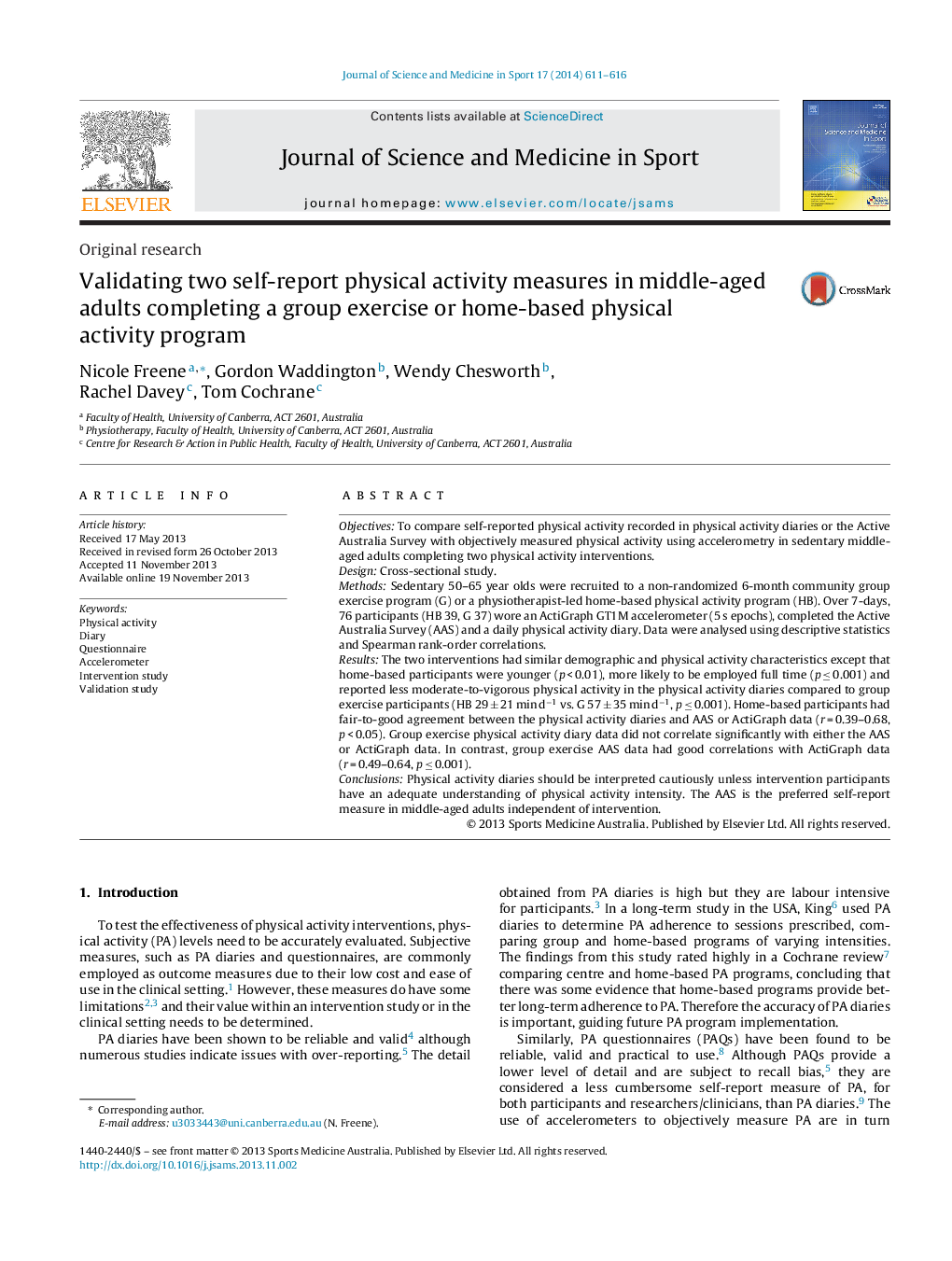| Article ID | Journal | Published Year | Pages | File Type |
|---|---|---|---|---|
| 2701414 | Journal of Science and Medicine in Sport | 2014 | 6 Pages |
ObjectivesTo compare self-reported physical activity recorded in physical activity diaries or the Active Australia Survey with objectively measured physical activity using accelerometry in sedentary middle-aged adults completing two physical activity interventions.DesignCross-sectional study.MethodsSedentary 50–65 year olds were recruited to a non-randomized 6-month community group exercise program (G) or a physiotherapist-led home-based physical activity program (HB). Over 7-days, 76 participants (HB 39, G 37) wore an ActiGraph GT1M accelerometer (5 s epochs), completed the Active Australia Survey (AAS) and a daily physical activity diary. Data were analysed using descriptive statistics and Spearman rank-order correlations.ResultsThe two interventions had similar demographic and physical activity characteristics except that home-based participants were younger (p < 0.01), more likely to be employed full time (p ≤ 0.001) and reported less moderate-to-vigorous physical activity in the physical activity diaries compared to group exercise participants (HB 29 ± 21 min d−1 vs. G 57 ± 35 min d−1, p ≤ 0.001). Home-based participants had fair-to-good agreement between the physical activity diaries and AAS or ActiGraph data (r = 0.39–0.68, p < 0.05). Group exercise physical activity diary data did not correlate significantly with either the AAS or ActiGraph data. In contrast, group exercise AAS data had good correlations with ActiGraph data (r = 0.49–0.64, p ≤ 0.001).ConclusionsPhysical activity diaries should be interpreted cautiously unless intervention participants have an adequate understanding of physical activity intensity. The AAS is the preferred self-report measure in middle-aged adults independent of intervention.
